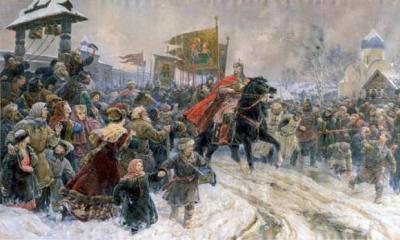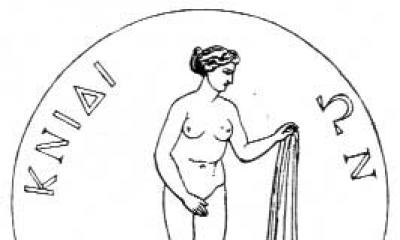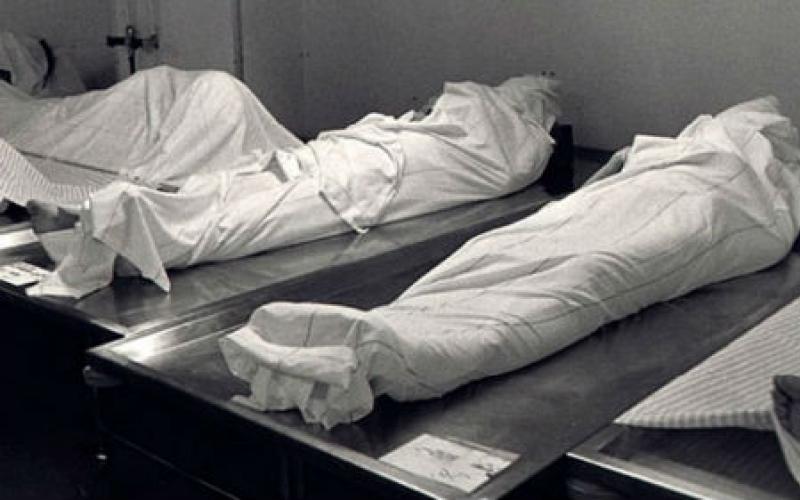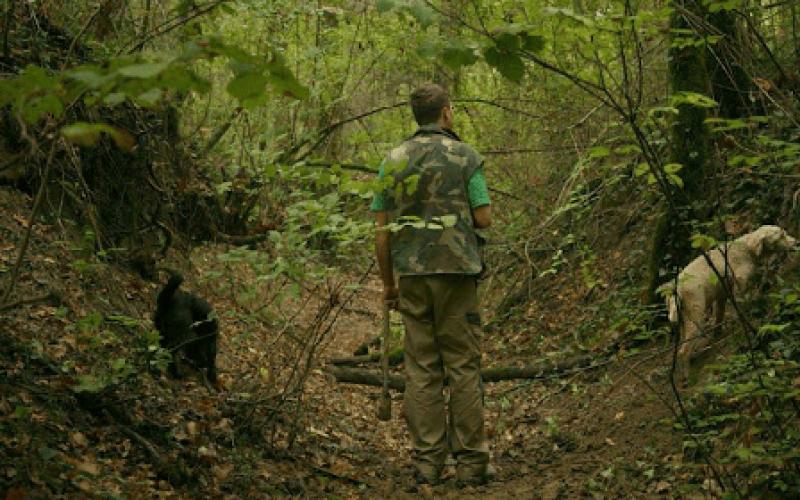There are many legends about Ursa Major and Ursa Minor. Here is one of them. Once upon a time, King Lycaon, who ruled the country of Arcadia, had a daughter named Callisto. Her beauty was so extraordinary that she dared to compete with Hera, the goddess and wife of the almighty supreme god Zeus. Jealous Hera eventually took revenge on Callisto: using her supernatural power, she turned her into an ugly bear. When the son of Callisto, young Arkad, one day returning from hunting, saw a wild beast at the door of his house, he suspected nothing, almost killed his mother bear. Zeus prevented this - he held Arkad's hand, and Callisto forever took him to heaven, turning into a beautiful constellation - Ursa Major. At the same time, Callisto's beloved dog was also turned into Ursa Minor. Arkad did not remain on Earth either: Zeus turned him into the constellation Bootes, doomed to forever guard his mother in heaven.
The main star of this constellation is called Arcturus, which means "guardian of the bear." Ursa Major and Ursa Minor are non-setting constellations, most visible in the northern sky.
There is another legend about circumpolar constellations. Fearing the evil god Kronos, who devoured babies, the mother of Zeus Rhea hid her newborn in a cave, where he was fed, in addition to the goat Amalthea, by two she-bears - Melissa and Helika, who were subsequently placed in heaven for this. Melissa is sometimes referred to as Kinosura, which means "tail of the dog". In legends different peoples Ursa Major is often called a chariot, wagon, or simply seven bulls.
Next to the star Mizar (from the Arabic word for "horse") - the second, or middle, star in the bucket handle Ursa Major- the star Alkor is barely visible (in Arabic it means "horseman", "rider"). These stars can be used to check eyesight; each star must be visible to the naked eye.
How Perseus Saved Andromeda
The names of the starry sky reflected the myth of the hero Perseus. Long ago, according to the ancient Greeks, Ethiopia was ruled by a king named Cepheus and a queen named Cassiopeia. They had only one daughter, the beautiful Andromeda. The queen was very proud of her daughter and once had the imprudence to boast of her beauty and the beauty of her daughter in front of the mythical inhabitants of the sea - the Nereids. They were very angry, because they believed that they were the most beautiful in the world. The Nereids complained to their father, the god of the seas, Poseidon, to punish Cassiopeia and Andromeda. And the mighty lord of the seas sent a huge sea monster - Kita - to Ethiopia. Fire shot out of Keith's mouth, black smoke poured from his ears, his tail was covered with sharp spikes. The monster devastated and burned the country, threatened the death of all the people. To appease Poseidon, Cepheus and Cassiopeia agreed to give their beloved daughter to be eaten by a monster. The beautiful Andromeda was chained to a coastal rock and dutifully awaited her fate. Meanwhile, on the other side of the world, one of the most famous legendary heroes - Perseus - performed an extraordinary feat. He entered the island where the gorgons lived - monsters in the form of women who had snakes instead of hair. The look of the gorgons was so terrible that anyone who dared to look into their eyes was instantly petrified. But nothing could stop the fearless Perseus. Seizing the moment when the Gorgons fell asleep. Perseus cut off the head of one of them - the most important, the most terrible - the Gorgon Medusa. At the same moment, the winged horse Pegasus fluttered out of the huge body of Medusa. Perseus jumped on Pegasus and rushed home. Flying over Ethiopia, he noticed Andromeda chained to a rock, which was about to be grabbed by a terrible Whale. The brave Perseus entered the fray with the monster. This fight went on for a long time. Perseus' magical sandals lifted him into the air, he plunged his curved sword into Keith's back. The whale roared and rushed at Perseus. Perseus directed the deadly gaze of the severed head of Medusa, which was attached to his shield, to the monster. The monster petrified and drowned, turning into an island. And Perseus unchained Andromeda and brought her to the palace of Cepheus. The delighted king gave Andromeda as his wife to Perseus. In Ethiopia, a merry feast continued for many days. And since then, the constellations of Cassiopeia, Cepheus, Andromeda, Perseus have been burning in the sky. On the star map you will find the constellation Cetus, Pegasus. So the ancient myths of the Earth found their reflection in the sky.
How Pegasus flew into the sky
Near Andromeda is the constellation Pegasus, which is especially visible at midnight in mid-October. The three stars of this constellation and the star Alpha Andromeda form a figure that has received the name "Great Square" from astronomers. It can be easily found in the autumn sky. The winged horse Pegasus arose from the body of Medusa Gorgon decapitated by Perseus, but did not inherit anything bad from her. He was a favorite of nine muses - the daughters of Zeus and the goddess of memory Mnemosyne, on the slope of Mount Helikon, he knocked out the source of Hippocrene with his hoof, the water of which brought inspiration to poets.
And another legend in which Pegasus is mentioned. The grandson of King Sisyphus Bellerophon was supposed to kill the fire-breathing monster Chimera (Chimera is Greek for "goat"). The monster had the head of a lion, the body of a goat and the tail of a dragon. Bellerophon managed to defeat the Chimera with the help of Pegasus. Once he saw a winged horse and the desire to take possession of it seized the young man. In a dream, the goddess Athena appeared to him, the beloved daughter of Zeus, wise and warlike, the patroness of many heroes. She gave Bellerophon a wonderful bridle that pacifies horses. With her help, Bellerophon caught Pegasus and went to fight the Chimera. Rising high into the air, he threw arrows at the monster until it expired.
But Bellerophon was not satisfied with his luck, but wished to ascend to heaven on a winged horse, to the dwelling of the immortals. Zeus, having learned about this, became angry, enraged Pegasus, and he threw his rider to Earth. Pegasus then ascended to Olympus, where he carried the thunderbolts of Zeus.
The main attraction of the constellation Pegasus is a bright globular cluster. Through binoculars you can see a round luminous misty spot, the edges of which sparkle like lights. big city seen from the aircraft. It turns out that there are about six million suns in this globular cluster!
The most beautiful constellation in the southern sky
There is no other constellation in the entire sky that would contain as many interesting and easily accessible objects for observation as Orion, located near the constellation Taurus. Orion was the son of Poseidon - the god of the seas in Greek mythology (according to Roman - Neptune). He was a famous hunter, fought with a bull and boasted that there was no animal that he could not defeat, for which Hera, the powerful wife of the powerful Zeus, sent Scorpio to him. Orion cleared the island of Chios from wild animals and began to ask the king of this island for the hand of his daughter, but he refused him. Orion tried to kidnap the girl, and the king took revenge on him: after getting drunk, he blinded Orion. Helios returned Orion's sight, but Orion still died from the bite of the Scorpion sent by the Hero. Zeus placed him in the sky in such a way that he can always get away from his pursuer, and indeed, these two constellations are never visible in the sky at the same time.
Where does Veronica's hair come from in the sky
The ancient constellation Leo had a rather large “territory” in the sky, and Leo himself was the owner of a magnificent “tassel” on his tail. But in 243 BC. he lost her. Happened funny story about which the legend says.
The Egyptian king Ptolemy Euergetes had a beautiful wife, Queen Veronica. Especially magnificent were her luxurious long hair. When Ptolemy went to war, his saddened wife swore an oath to the gods: if they keep her beloved husband safe and sound, sacrifice their hair
Soon Ptolemy returned home safely, but when he saw his shorn wife, he was upset. The royal couple was somewhat reassured by the astronomer Konon. declaring that the gods lifted Veronica's hair to heaven, where they are destined to decorate the spring nights.
Constellation Taurus
Among the ancient peoples, the most important was the constellation Taurus, since the new year began in the spring. In the zodiac, Taurus is the most ancient constellation, since cattle breeding played a huge role in the life of ancient peoples, and that constellation was associated with the bull (calf), where the Sun, as it were, conquered winter and heralded the arrival of spring and summer. In general, many ancient peoples revered this animal, considered it sacred. AT Ancient Egypt there was the sacred bull Apis, who was worshiped during his lifetime and whose mummy was solemnly buried in a magnificent tomb. Every 25 years Apis was replaced with a new one. In Greece, the bull was also held in high esteem. In Crete, the bull was called the Minotaur. Heroes of Hellas Hercules, Theseus, Jason subdued the bulls. The constellation Aries was also highly revered in antiquity. The supreme god of Egypt, Amun-Ra, was depicted with a ram's head, and the road to his temple was an alley of sphinxes with ram's heads. It was believed that the constellation Aries was named after Aries with the Golden Fleece, after which the Argonauts sailed. In the sky, by the way, there are a number of constellations that reflect the Argo Ship. The alpha (brightest) star of this constellation is called Gamal (Arabic for "adult ram"). The brightest star in the constellation Taurus is called Aldebaran.
Where are the twins in the sky
In this constellation, two bright stars are very close to each other. They got their name in honor of the Argonauts Dioscuri - Castor and Pollux - twins, sons of Zeus, the most powerful of the Olympic gods, and Leda, a frivolous earthly beauty, the brothers of Helen the beautiful - the culprit of the Trojan War.
Castor was famous as a skilled charioteer, and Pollux as an unsurpassed fist fighter. They participated in the campaign of the Argonauts and the Calydonian hunt. But one day the Dioscuri did not share the booty with their cousins, the giants Idas and Linkey. In the battle with them, the brothers were badly wounded. And when Castor died, the immortal Pollux did not want to part with his brother and asked Zeus not to separate them. Since then, by the will of Zeus, the brothers spend half a year in the kingdom of gloomy Hades, and half a year - on Olympus. There are periods when on the same day the star Castor is visible against the background of the dawn, and Pollux is visible against the background of the evening. Perhaps it was this circumstance that gave rise to the legend of the brothers living either in the realm of the dead or in heaven.
The Dioscuri brothers were considered in ancient times the patrons of sailors caught in a storm. And the appearance on the masts of ships before a thunderstorm of the "Fires of St. Elmo" was considered a visit to the Twins by their sister Elena. St. Elmo's fires are luminous discharges of atmospheric electricity observed on pointed objects (tops of masts, lightning rods, etc.). The Dioscuri were also revered as guardians of the state and patrons of hospitality.
In ancient Rome, a silver coin "Dioscuri" with the image of stars was in circulation.
How cancer appeared in the sky
The constellation Cancer is one of the most subtle constellations of the zodiac. Its history is very interesting. There are several rather exotic explanations for the origin of the name of this constellation. So, for example, it was seriously claimed that the Egyptians placed Cancer in this region of the sky as a symbol of destruction and death, because this animal feeds on carrion. Cancer moves tail forward. About two thousand years ago in the constellation of Cancer was the point of the summer solstice (ie, the longest daylight hours). The sun, having reached at this time the maximum distance to the north, began to "back away" back. The length of the day gradually decreased.
According to classical ancient mythology, a huge sea Cancer attacked Hercules when he fought the Lernaean Hydra. The hero crushed him, but the goddess Hera, who hated Hercules, placed Cancer in the sky.
The Louvre houses the famous Egyptian zodiac circle, in which the constellation Cancer is located above all others.
Is the lion in the sky scary?
About 4.5 thousand years ago, the point of the summer solstice was located in this constellation, and the Sun appeared in this constellation during the hottest time of the year. Therefore, among many peoples, it was the Lion that became the symbol of fire.
The Assyrians called this constellation the "great fire," and the Chaldeans associated the ferocious lion with the no less ferocious heat that was every summer. They believed that the Sun receives additional strength and warmth, being among the stars of the lion.
In Egypt, this constellation was also associated with the summer period: flocks of lions, fleeing the heat, migrated from the desert to the Nile valley, which at that time was flooding. Therefore, the Egyptians placed on the gates of irrigation canal locks that directed water to the fields, images in the form of a lion's head with an open mouth.
Virgo
The Virgo constellation, located next to Leo, this constellation was sometimes represented by a fabulous sphinx - a mythical creature with the body of a lion and the head of a woman. Often in early myths, the Virgin was identified with Rhea, the mother of the god Zeus, the wife of the god Kronos. Sometimes she was seen as Themis, the goddess of justice, who, in her classical form, holds scales in her hands ( zodiac constellation next to Virgo). There is evidence that in this constellation, ancient observers saw Astrea, the daughter of Themis and the god Zeus, the last of the goddesses who left the Earth at the end of the Bronze Age. Astrea - the goddess of justice, a symbol of purity and innocence, left the Earth because of the crimes of people. This is how we see the Virgin in ancient myths.
The virgin is usually depicted with the rod of Mercury and an ear. Spica (translated from Latin "ear") is the name of the brightest star in the constellation. The very name of the star and the fact that the Virgin was depicted with an ear in her hands indicates the connection of this star with human agricultural activities. It is possible that the beginning of any agricultural work coincided with her appearance in the sky.
Scales
Indeed, it seems strange that among the animals and "semi-animals" in the Zodiac there is a sign of Libra. Over two thousand years ago, this constellation was the point of the autumnal equinox. The equality of day and night could be one of the reasons why the zodiac constellation was named Libra.
The appearance of Libra in the sky in the middle latitudes indicated that the time had come for sowing, and the ancient Egyptians, already at the end of spring, could consider this as a signal to start harvesting the first crop. Scales - a symbol of balance - could simply remind the ancient farmers of the need to weigh the harvest.
Among the ancient Greeks, Astrea, the goddess of justice, weighed the fate of people with the help of Libra. One of the myths explains the appearance of the zodiac constellation Libra as a reminder to people of the need to strictly observe the laws. The fact is that Astrea was the daughter of the almighty Zeus and the goddess of justice Themis. On behalf of Zeus and Themis, Astraea regularly “inspected” the Earth (armed with scales and blindfolded in order to judge everything objectively, supply Olympus with good information and mercilessly punish deceivers, liars and everyone who dared to commit all kinds of unjust acts). So Zeus decided that Libra's daughter should be placed in the sky.
Scorpion
Not only because of the external similarity, this constellation was assigned the role of a poisonous creature.
The sun entered this region of the sky in late autumn, when all nature seemed to die, in order to be reborn, like the god Dionysus, in the early spring of the next year. The sun was considered “stung” by some poisonous creature (by the way, in this region of the sky there is also the constellation of the Serpent!), “from that it hurt” all winter, remaining weak and pale.
According to classical Greek mythology, this is the same Scorpio that stung the giant Orion and was hidden by the goddess Hera on the diametrically opposite part of the celestial sphere. It was he, the heavenly Scorpio, who frightened the most unfortunate Phaethon, the son of the god Helios, who decided to ride across the sky in his fiery chariot, not listening to his father's warnings.
Other nations gave this constellation their own names. For example, for the inhabitants of Polynesia, it seemed like a fishing hook, with which the god Maun pulled out of the depths Pacific Ocean island of New Zealand. Among the Maya Indians, this constellation was associated with the name Yalagau, which means "Lord of Darkness."
According to many astronomers, the sign of Scorpio is the most sinister - a symbol of death. It seemed especially scary when the planet of disasters, Saturn, turned out to be in it.
Scorpio is a constellation where new stars often flare up, in addition, this constellation is rich in bright star clusters.
Sagittarius
According to ancient Greek mythology, the wisest of the centaurs Chiron, the son of the god Chronos and the goddess Themis, created the first model of the celestial sphere. At the same time, he took one place in the Zodiac for himself. But he was outstripped by the insidious centaur Krotos, who took his place by deceit and became the constellation of Sagittarius. And the god Zeus turned Chiron himself after death into the constellation of the Centaur. And so it turned out in the sky as many as two centaurs. Even Scorpio himself is afraid of the evil Sagittarius, at whom he aims with a bow.
Sometimes you can find the image of Sagittarius in the form of a centaur with two faces: one is turned back, the other is forward. In this he resembles the Roman god Janus. The first month of the year, January, is associated with the name of Janus. And the Sun is in Sagittarius in winter.
Thus, the constellation, as it were, symbolizes the end of the old and the beginning of the new year, with one of its faces looking into the past, and the other into the future.
In the direction of the constellation Sagittarius is the center of our galaxy. If you look at the map of the starry sky, then Milky Way passes through the constellation Sagittarius.
Like Scorpio, Sagittarius is very rich in beautiful nebulae. Perhaps this constellation more than any other deserves the name "heavenly treasury." Many star clusters and nebulae are strikingly beautiful.
Capricorn
Capricorn is a mythical creature with the body of a goat and the tail of a fish. According to the most common ancient Greek legend the goat-footed god Pan, the son of Hermes, the patron saint of shepherds, was frightened by the hundred-headed giant Typhon and rushed into the water in horror. He has since become a water god and has grown a fish tail. Transformed by the god Zeus into a constellation, Capricorn became the lord of the waters and the harbinger of storms. It was believed that he sends heavy rains to the earth. According to another legend, this is the goat Amalthea, who nursed Zeus with her milk.
The Indians called this constellation Makara, i.e. a miracle dragon, also half goat, half fish. Some peoples depicted him as a half-crocodile - a half-bird. Similar ideas existed in South America. When the sun entered the constellation Capricorn, the Indians celebrated New Year, putting on masks depicting goat heads for ceremonial dances. But the indigenous Australians called the constellation Capricorn the constellation Kangaroo, which is chased by heavenly hunters to kill him and fry him on a large fire.
Among many ancient peoples, the goat was revered as a sacred animal; divine services were performed in honor of the goat. People dressed in sacred clothes made of goat skins and brought a gift to the gods - a sacrificial goat.
It is with such customs and with this constellation that the idea of \u200b\u200bthe "scapegoat" - Azazel, is associated. Azazel - (letting goat) - the name of one of the goat-like gods, demons of the desert. On the so-called day of the goat, two goats were selected: one for sacrifice, the other for release into the wilderness. Of the two goats, the priests chose which one for God and which one for Azazel. First, a sacrifice was made to God, and then another goat was brought to the high priest, on which he laid his hands and thereby, as it were, transferred to him all the sins of the people. And after that, the goat was released into the desert. The desert was a symbol of the underworld and a natural place for sins. The constellation Capricorn is located at the bottom of the ecliptic. Perhaps this is what caused the idea of the underworld.
In the constellation of Capricorn about 2 thousand years ago was the point of the winter solstice. The ancient philosopher Macrobius believed that the Sun, having passed the lowest point, begins to climb up, like a mountain goat striving for the top.
Aquarius
This constellation was called by the Greeks Hydrohos, among the Romans - Aquarius, among the Arabs - Saqib-al-ma. All this meant the same thing: a person pouring water. The constellation Aquarius is associated with the Greek myth of Deucalion and his wife Pyrrha, the only people who escaped the Flood.
The name of the constellation really leads to the "homeland of the Flood" in the valley of the Tigris and Euphrates rivers. In some writings of the ancient people - the Sumerians - these two rivers are depicted as flowing from the vessel of Aquarius. The eleventh month of the Sumerians was called "the month of the water curse." According to the Sumerians, the constellation Aquarius was in the center of the "celestial sea", and therefore foreshadowed the rainy season. It was identified with the god who warned people about the flood. This legend of the ancient Sumerians is similar biblical story about Noah and his family - the only people who escaped the flood in the ark.
In Egypt, the constellation Aquarius was observed in the sky during the days of the highest water level in the Nile River. It was believed that the water god Knemu overturns a huge ladle into the Nile. It was also believed that the White and Blue Nile rivers, tributaries of the Nile, flow from the god's vessels.
It is possible that the legend about one of the exploits of Hercules is connected with the constellation Aquarius - cleaning the Augean stables (for which the hero needed to dam three rivers).
Fish
The very arrangement of the stars in the sky inspires the idea of two fish tied together with a ribbon or rope. The origin of the name of the constellation Pisces is very ancient and, apparently, is connected with Phoenician mythology. In this constellation, the Sun entered the season of rich fishing. The goddess of fertility was depicted as a woman with a fish tail, which, according to legend, appeared to her when she and her son, frightened by a monster, rushed into the water.
A similar legend existed among the ancient Greeks. Only they believed that Aphrodite and her son Eros turned into fish: they walked along the river bank, but frightened by the evil Typhon, rushed into the water and escaped, turning into fish. Aphrodite became the southern Pisces, and Eros became the northern Pisces.
The sun
ancient egyptian myth
Ra - the god of the Sun, born of Chaos, was the ruler of the entire universe. After he defeated the forces of Darkness, he gave birth to a son, Shu, and a daughter, Dry, who created Gebe (Earth) and Nut (Sky). And those, in turn, gave life to Osiris and all the other gods.
Ra created the world and became its sovereign master and ruler. Its power came from one mysterious magic word that no one was supposed to know. If anyone knew this magic word, Ra would immediately lose his strength and power.
Isis, the great-granddaughter of Ra, who owned the secrets of all magic, decided to seize both the power and the power of the sun god Ra. She sent a poisonous snake to him, which stung the old Ra, and he began to writhe in pain. Only Isis could save him from unbearable suffering. For a long time, Ra begged his great-granddaughter to help him, but she refused, insisting that he tell her this mysterious word. Ra suffered for a long time, and when he could no longer endure the torment, he was forced to reveal his secret: it was the word of Ra - his given name. The pain immediately passed, but at the same moment Ra lost his strength and power over the world. People no longer revered him as a god. The temples were empty, no one offered more sacrifices to him. Then Ra became angry and decided to destroy the entire human race.
Ra sent his terrible daughter Sokhmet to Earth. She had the head of a lioness, and Sokhmet destroyed everything on Earth, like a fiery element. The plague came everywhere, only weeping and groaning were heard on Earth. Then people remembered the god Ra and began to send him their fervent prayers so that he would save them from inevitable death.
Ra took pity on people, he tamed the terrible Sekhmet, but he no longer wanted to stay among people and went to Heaven. There, on his boat, he sailed along the Heavenly Nile and illuminated the entire Universe with his light.
Every day, when Ra finished his daily journey, he descended to Earth in the Western Mountains, where there was an entrance to the underworld. There he changed from the day boat to the night one and sailed on it along the Underground Nile. But at midnight, his age-old enemy, the monstrous serpent Apep, attacked him. To destroy the sun god, Apep drank the waters of the Underground Nile. But Ra again defeated him and forced him to release the swallowed water. The Underground Nile began to flow again, and Ra continued his voyage along it to the Eastern Mountains. As soon as he reached them, he moved to his day boat. Floating along the Heavenly Nile, Ra sent his light to the Earth. People rejoiced and every morning met the appearance of Ra in the east with prayers. They sang hymns in which they glorified his mercy and good deeds to the human race throughout the Earth.
ancient greek myth
After Uranus (Sky) became the master of the whole world, he married the blessed Gaia (Earth). And they had six sons and six daughters - mighty and terrible titans and titanides.
Titan Hyperion and the eldest daughter of Uranus Theia had three children - Helios (Sun), Selena (Moon) and Eos (Dawn).
Far on the eastern edge of the Earth was the golden chamber of Helios, the god of the Sun. Every morning, when the east began to turn pink, pink-fingered Eos opened the golden gates, and Helios rode out of the gates on his golden chariot, which was drawn by four winged horses white as snow. Standing in the chariot, Helios firmly held the reins of his violent horses. He shone all over with a dazzling light emitted by his long golden robe and a radiant crown on his head. Its rays illuminated first the highest Mountain peaks, and they began to glow, as if they were engulfed in violent tongues of fire.
Higher and higher the chariot rose, and the rays of Helios poured onto the Earth, giving it light, warmth and life.
After Helios reached the heavenly heights, he began to slowly descend on his chariot to the western edge of the Earth. There, on the sacred waters of the Ocean, a golden boat was waiting for him. The winged horses brought the chariot with the rider right into the boat, and Helios rushed on it along underground river east to their golden halls. There Helios rested at night. With the onset of day, he again rode his golden chariot to the heavenly expanses to give light and joy to the Earth.
Moon
ancient egyptian myth
The god of time and the god of the moon was Thoth, the viceroy of the god Ra. When Ra descended on his boat along the Heavenly Nile to the Western Mountains and began sailing along the Underground Nile, Thoth, taking the form of the Moon, set off on his path through the Sky. Slowly and thoughtfully he made his circle along the heavenly path.
The moon god Thoth was also the god of wisdom and the patron of scientists.
ancient greek myth
Selene - the daughter of the titan Hyperion and Theia - was the sister of Helios. When the goddess Nobody (Night) throws her black veil over the Earth, everything is shrouded in impenetrable darkness. Only the stars, as if frightened by the dark night, tremble and emit a pale light. There are many of them, they dotted the entire Sky, but they are powerless to drive away the darkness of the night that has swallowed up the entire Earth. And here in the east appears a faint gentle radiance. It gradually intensifies, as if the distance of the sky is engulfed in flames ... After a while, in the east, on the horizon, the majestic goddess of the moon - Selena - begins to rise. She stands calmly in her golden-red chariot, which is slowly drawn across the sky by bulls with horns. From her yellow-golden clothes and from the crescent moon over her brow, a gentle silvery light pours onto the sleeping Earth, which drives away the darkness of the night.
Having passed her heavenly path, Selena descends on a chariot into a deep cave located in the mountains of Latum near Kariy. There lies the son of Zeus Endymion, plunged into eternal sleep. Selena is in love with Endymion. She quietly bends over him, strokes his head, caresses his face and whispers the most tender love words. But Endymion does not feel her caresses. Therefore, Selena is always sad and illuminates the Earth at night with the same sad light.
Milky Way
ancient greek myth
The Milky Way has attracted the attention of people since ancient times. In the mythology of the ancient Greeks, the following is told about him.
On the birthday of Hercules, Zeus, delighted that the most beautiful of mortal women, Alcmene, gave birth to his son, predetermined his fate - to become the most famous hero of Greece. In order for his son Hercules to receive divine power and become invincible, Zeus ordered the messenger of the gods Hermes to bring Hercules to Olympus so that the great goddess Hera would feed him.
Hermes flew with the speed of thought in his winged sandals. Unnoticed by anyone, he took the newly born Hercules and brought him to Olympus. The goddess Hera at this time slept under a magnolia strewn with flowers. Quietly approached the goddess Hermes and put little Hercules to her chest, who greedily began to suck her divine milk, but suddenly the goddess woke up. In anger and rage, she threw the baby from her breast, whom she had hated long before his birth. Hera's milk spilled and flowed across the sky like a river. This is how the Milky Way (galaxy, galaxy) was formed.153
Bulgarian myth
The Bulgarian people called the Milky Way Kumov Straw or simply Straw. Here is what the folk legend tells.
Once in a fierce winter, when the whole earth was covered with deep drifts of snow, one poor man ran out of fodder for his oxen. Day and night he thought about what to feed the cattle, where to get at least a little straw so that the oxen would not die of hunger.
And so, on a dark frosty night, he took a basket and went to his godfather, who had many stacks of straw. He carefully filled the basket with straw and quietly went back. In the darkness, he did not notice that his basket was full of holes. He walked like this and walked with a basket behind his back to his house, and straw after straw fell from a holey basket, forming a long trail behind him. And when he came home, he saw that not a straw was left in the basket!
At dawn, the owner went out to the haystack to collect straw and feed his oxen, and saw that at night someone had stirred up his haystack and stole the straw. He followed the trail and reached the house where his godfather lived. He called his godfather and began to scold him for stealing straw from him. And the godfather began to make excuses and lie that he did not even get out of bed that night. Then the godfather took him by the hand, led him out into the street and showed him the straw scattered along the road. Then the thief was ashamed ...
And the owner of the straw went to his home and said: “Let this stolen straw light up and never go out, so that everyone knows and remembers that you can’t steal from the godfather ...” The straw caught fire, and since then Kumov Straw has been burning in the sky to this day.
Already in ancient times, our ancestors divided the starry sky into clearly distinguishable combinations of stars, which they called constellations. Astronomy arose before all other sciences - noticing patterns in the movement of stars, our ancestors learned to measure time, created the first prototypes of the calendar, and learned to navigate the terrain. The names of the constellations were associated with myths, the names of gods, the names of instruments and mechanisms.
It sounds so mysterious and beautiful: "The Constellation of the Unicorn" ... But where did such names come from?
Of course, the names of individual groups of stars were invented by astrologers! Usually the stars are called in Latin, this is a tradition. But in each country the names are translated into their own language. The fantasy of the ancient astrologers was boundless; with the help of their imagination, they saw the outlines of fabulous animals or brave heroes in the starry sky. Almost every constellation is associated with some ancient legend or myth.
Constellations Ursa Major, Ursa Minor, Bootes and the Hounds of the Dogs are connected with one myth, which still excites us today with the tragedy described in it. Long ago, King Lycaon ruled Arcadia. And he had a daughter, Callisto, known throughout the world for her charm and beauty. Even the ruler of Heaven and Earth, the Thunderer Zeus, admired her divine beauty as soon as he saw her. Secretly from his jealous wife - the great goddess Hera - Zeus constantly visited Callisto in her father's palace. From him she gave birth to a son Arkad, who quickly grew up. Slender and handsome, he skillfully shot from a bow and often went hunting in the forest. Hera learned about the love of Zeus and Callisto. Falling into a rage, she turned Callisto into an ugly bear. When Arkad returned from hunting in the evening, he saw a bear in the house. Not knowing that this was his own mother, he pulled the bow string ... But Zeus did not allow Arkad, although unwittingly, to commit such a grave crime. Even before Arkad fired an arrow, Zeus grabbed the bear by the tail and quickly soared with her into the sky, where he left her in the form of the constellation Ursa Major. But while Zeus was carrying the bear, her tail began to lengthen, which is why the Big Dipper has such a long and curved tail in the sky. Knowing how much Callisto was attached to her maid, Zeus took her to heaven and left her there in the form of a small but beautiful constellation Ursa Minor. Zeus and Arkada transferred to the sky and turned into the constellation Bootes. Bootes is forever doomed to protect his mother, the Big Dipper.19 Therefore, he firmly holds the leashes of the Hounds of the Dogs, which bristled with rage and are ready to pounce on the Big Dipper and tear it apart.
There is another version of this myth. The eternally young goddess Artemis, dressed in hunting clothes, with a bow, a quiver and a sharp spear, wandered through the mountains and forests for a long time in search of good game. Following her, her companions and maids moved, resounding with laughter and songs of the mountain peaks. The girls were one more beautiful than the other, but the most charming was Callisto. When Zeus saw her, he admired her youth and beauty. But the servants of Artemis were forbidden to marry. To master it, Zeus went to the trick. One night, in the form of Artemis, he appeared before Callisto... From Zeus, Callisto gave birth to a son, Arkad, who quickly grew up and became an unsurpassed hunter. The jealous wife of Zeus Hera, who learned about her husband's love affair, unleashed her anger on Callisto, turning her into an ugly clumsy bear. One day, the son of Callisto Arkad was wandering through the forest, and suddenly a bear came out of the bushes to meet him. Not knowing that it was his mother, he pulled the string, and the arrow flew into the bear ... But Zeus, who vigilantly guarded his beloved Callisto, last moment took the arrow away, and it flew past. At the same time, Zeus turned Arcade into a little bear cub. After that, he grabbed the bear with the cub by the tails and carried them to the sky. There he left Callisto to shine in the form of the beautiful constellation Ursa Major, and Arcade - in the form of the constellation Ursa Minor. In the sky, in the form of the constellations Callisto and Arkad, they became even more beautiful than on Earth. Not only people admired them, but Zeus himself. From the top of Mount Olympus, he often looked at the constellations Ursa Major and Ursa Minor and enjoyed their beauty and continuous movement across the sky. Hera was unpleasant when she saw her husband admiring his pets. She turned with an ardent prayer to the sea god Poseidon so that he would never allow the Big Dipper to touch the sea. Let her die of thirst! But Poseidon did not heed the pleas of Hera. Could he really let the beloved of his brother, Zeus the Thunderer, die of thirst?! Ursa Major continues to circle around the pole, while once a day it descends low over the northern side of the horizon, touches the sea surface, quenches its thirst and then rises again, attracting the eyes of people and gods with its beauty.
According to one legend, constellation Bootes personifies the first farmer Triptolemus. Demeter, the goddess of fertility and the patroness of agriculture, gave him an ear of wheat, a wooden plow and a sickle. She taught him how to plow the land, how to sow wheat grains, and with a sickle to harvest the ripened crop. The very first field sown with Triptolem gave a rich harvest. Fulfilling the will of the goddess Demeter, Triptolemos initiated people into the secrets of agriculture. He taught them to cultivate the land and worship the goddess Demeter so that she would reward their labor with rich fruits. Then he got into a chariot, which was harnessed by snakes, and flew high, high ... all the way to the sky. There, the gods turned the first plowman into the constellation Bootes and gave him tireless oxen - bright stars in the constellation Ursa Major. With their help, he constantly plows and sows the sky. And when, after a period of invisibility in early spring, after midnight, a plowman appeared in the east - the constellation of Bootes, people began to prepare for spring field work.
The beautiful constellation Ursa Major also attracted the attention of the Bulgarian people, who gave it the name Carriage. This name is associated with such a legend. Once a young man went to the forest to chop wood. He came to the forest, unharnessed the oxen and let them graze. Suddenly, a she-bear ran out of the forest and ate one ox. The young man was very brave, he grabbed the bear and harnessed her to the wagon instead of the ox that she had eaten. But the bear could not pull the wagon, twitching from side to side, and therefore in the constellation the wagon seems to be twisted. In the constellation Ursa Major, old people liken individual stars like this: the star η - Charioteer, the star Mizar (ζ) - Ursa, the star ε - Ox, the star Alcor - a dog that barks at a bear. The rest of the stars form the wagon itself. Because of similar geometric figures in the constellations Ursa Major and Ursa Minor, the Bulgarian people also call the constellation Ursa Minor. Small Carriage.
And there is a legend about constellations Cassiopeia, Cepheus, Andromeda, Pegasus and Perseus. It is believed that once upon a time, the mythical Ethiopian king Cepheus was married to the beautiful queen Cassiopeia. Once she, being surrounded by nereids - the mythical inhabitants of the sea, recklessly boasted of the unearthly beauty of her daughter Andromeda. The Nereids envied and complained to the ruler of the seas, Poseidon. He unleashed a terrible monster on the shores of Ethiopia, which ate people. Cepheus rushed to the oracle for help, but he said that the only way out was to give Andromeda. Cepheus had to sacrifice his beloved daughter: tie him to a coastal rock and leave him to await his death. But Andromeda was saved by the hero Perseus, who flew to her on a winged horse - Pegasus. The fantasy of the ancient Greeks also placed the main participants in this myth in the sky in the form of constellations.
One of the southernmost constellations known to ancient stargazers is Centaur or Centaurus. Initially, it included those stars that later formed the constellation of the Southern Cross. But even in their absence, Centaurus - big constellation containing many colorful stars and curious objects. One of the Greek myths says that the centaur in the sky is none other than the immortal and wise Chiron, the son of Kronos and the nymph Filira, a connoisseur of science and art, the educator of Greek heroes - Achilles, Asclepius, Jason. Therefore, it can be considered the Constellation of the Teacher.
It is impossible not to mention the constellation, which, not without reason, is considered the most beautiful - this Orion. In the arrangement of the stars, the image of the great hunter Orion, the son of Poseidon, is easily guessed. In this relatively small constellation, there are many bright luminaries, and among the brightest there are fickle ones. The constellation can be easily found by three beautiful white-blue stars in the hunter's belt - on the right is Mintaka, which means “belt” in Arabic, in the center of Alnilam is a “pearl belt”, and on the left Alnitak is a “sash”. They are spaced from each other at equal distances and are located in a line directed at one end to the blue Sirius in Big Dog and others to the red Aldebaran in Taurus.
The beautiful and mysterious names of the constellations enhance the incomprehensibility of the starry sky and allow you to see bright pictures in an ordinary cluster of stars. Watching them, we kind of go beyond space and time - we imagine ourselves there, among these stars, at the same time imagining how ancient astronomers looked through telescopes and studied the mysteries of the Sky step by step.
…Big Dipper… The beautiful constellation Ursa Major attracted the attention of the Bulgarian people, who gave it the name Carriage. This name is associated with such a legend. Once a young man went to the forest to chop wood. He came to the forest, unharnessed the oxen and let them graze. Suddenly, a she-bear ran out of the forest and ate one ox. The young man was very brave, he grabbed the bear and harnessed her to the wagon instead of the ox that she had eaten. The beautiful constellation Ursa Major attracted the attention of the Bulgarian people, who gave it the name Carriage. This name is associated with such a legend. Once a young man went to the forest to chop wood. He came to the forest, unharnessed the oxen and let them graze. Suddenly, a she-bear ran out of the forest and ate one ox. The young man was very brave, he grabbed the bear and harnessed her to the wagon instead of the ox that she had eaten. But the bear could not pull the wagon, twitching from side to side, and therefore in the constellation the wagon seems to be twisted. In the constellation Ursa Major, old people liken individual stars like this: the star η - Charioteer, the star Mizar (ζ) - Ursa, the star ε - Ox, the star Alcor - a dog that barks at a bear. The rest of the stars form the wagon itself. Because of similar geometric figures in the constellations Ursa Major and Ursa Minor, the Bulgarian people also call the constellation Ursa Minor - the Little Carriage.
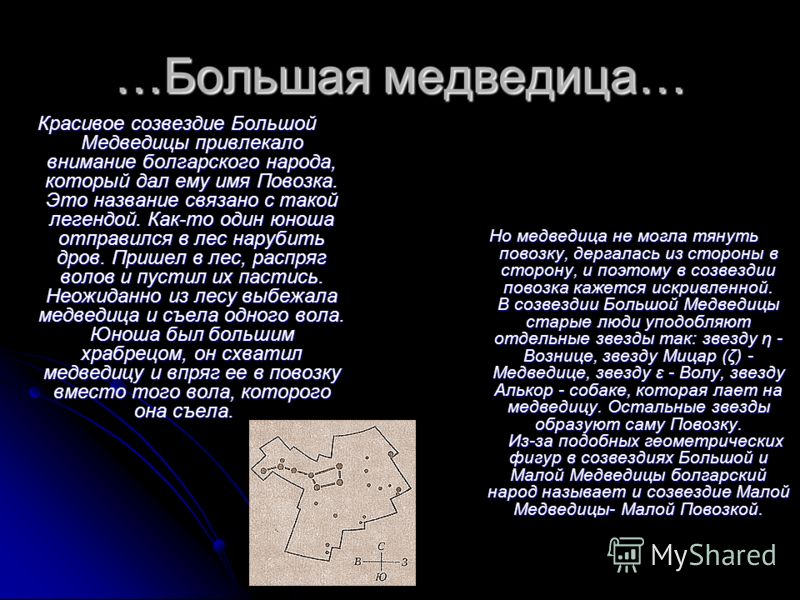
... Ursa Minor ... It is also a circumpolar constellation and is visible above the horizon at any time. Almost entirely it is surrounded by the constellation Draco. Only to the north of it is the constellation Giraffe. On a clear and moonless night with the naked eye, 20 stars can be seen in this constellation, but in general they are faint stars. Only one of them - Polaris - the second star magnitude. The brightest stars form a figure resembling the figure of Ursa Major, only smaller and inverted. Therefore, the constellation was named Ursa Minor.
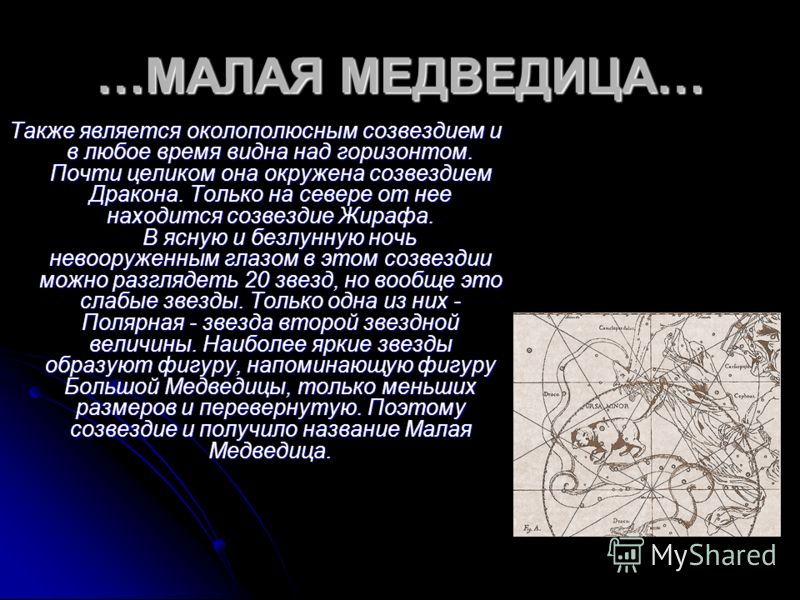
BOOTAS One of the most beautiful constellations. It attracts attention with an interesting configuration, which is formed by its brightest stars: an unfolded female fan, in the handle of which the zero-magnitude star Arcturus shines with a reddish color. Bootes is best seen at night from April to September. Near it are the following constellations: the Northern Crown, the Serpent, Virgo, the Hair of Veronica, the Hounds of the Dogs and the Dragon.
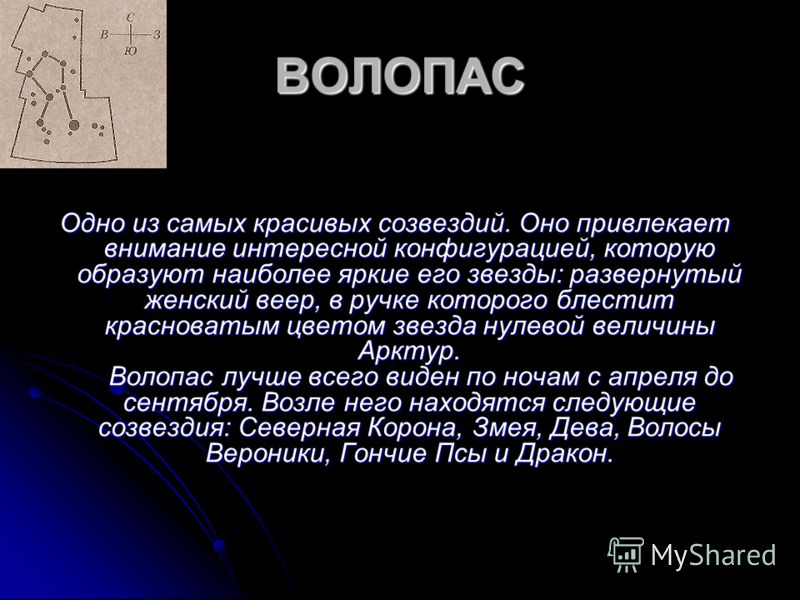
According to one legend, the constellation Bootes personifies the first farmer Triptolemus. Demeter, the goddess of fertility and the patroness of agriculture, gave him an ear of wheat, a wooden plow and a sickle. She taught him how to plow the land, how to sow wheat grains, and with a sickle to harvest the ripened crop. The very first field sown with Triptolem gave a rich harvest. According to one legend, the constellation Bootes personifies the first farmer Triptolemus. Demeter, the goddess of fertility and the patroness of agriculture, gave him an ear of wheat, a wooden plow and a sickle. She taught him how to plow the land, how to sow wheat grains, and with a sickle to harvest the ripened crop. The very first field sown with Triptolem gave a rich harvest. Fulfilling the will of the goddess Demeter, Triptolemos initiated people into the secrets of agriculture. He taught them to cultivate the land and worship the goddess Demeter so that she would reward their labor with rich fruits. Then he got into a chariot, which was harnessed by snakes, and flew high, high ... all the way to the sky. There, the gods turned the first plowman into the constellation Bootes and gave him tireless oxen - bright stars in the constellation Ursa Major. With their help, he constantly plows and sows the sky. And when, after a period of invisibility in early spring after midnight, a plowman appeared in the east - the constellation of Bootes, people began to prepare for spring field work.
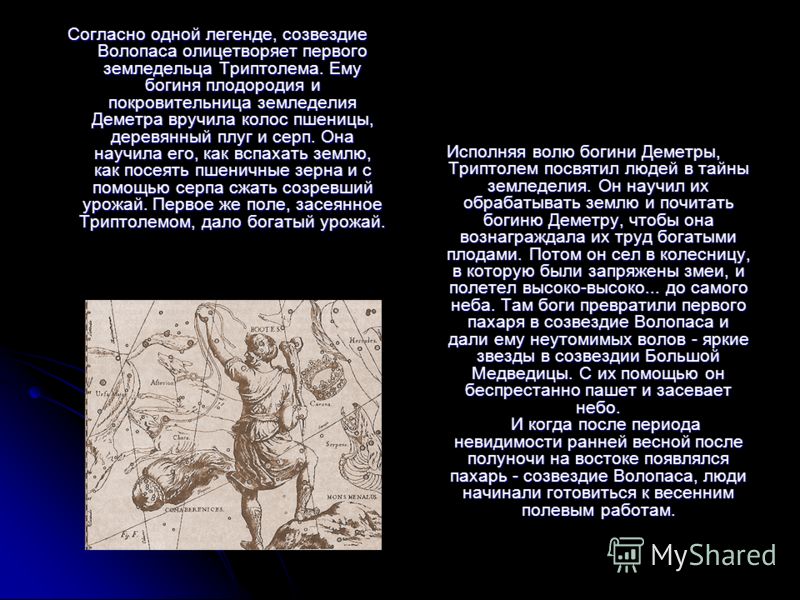
... HOUNDS ... A small constellation. It doesn't have bright stars that would catch our eye. It is best observed at night from February to July. It is surrounded by the following constellations: Bootes, Veronica's Coma and Ursa Major. On a clear, moonless night in the constellation Canis Hounds, about 30 stars can be seen with the ordinary eye. These are rather faint stars, approximately at the limit of visibility with the naked eye, and they are so randomly scattered that if they are connected by lines, it is very difficult to obtain any characteristic geometric figure. Little constellation. There are no bright stars in it that would attract our eyes. It is best observed at night from February to July. It is surrounded by the following constellations: Bootes, Veronica's Coma and Ursa Major. On a clear, moonless night in the constellation Canis Hounds, about 30 stars can be seen with the ordinary eye. These are rather faint stars, approximately at the limit of visibility with the naked eye, and they are so randomly scattered that if they are connected by lines, it is very difficult to obtain any characteristic geometric figure. There are no remarkable objects in the constellation Canis Hounds that are visible to the naked eye. But with binoculars or an ordinary telescope, you can observe one of the most beautiful and interesting double stars. This is α Canis Hounds - the brightest star in the constellation. In the field of view of a telescope, this star is a magnificent sight: the main star emits yellow light, and its companion glows with purple light. This star attracts attention not only with its beauty, but also interesting feature- the main star has a variable brightness
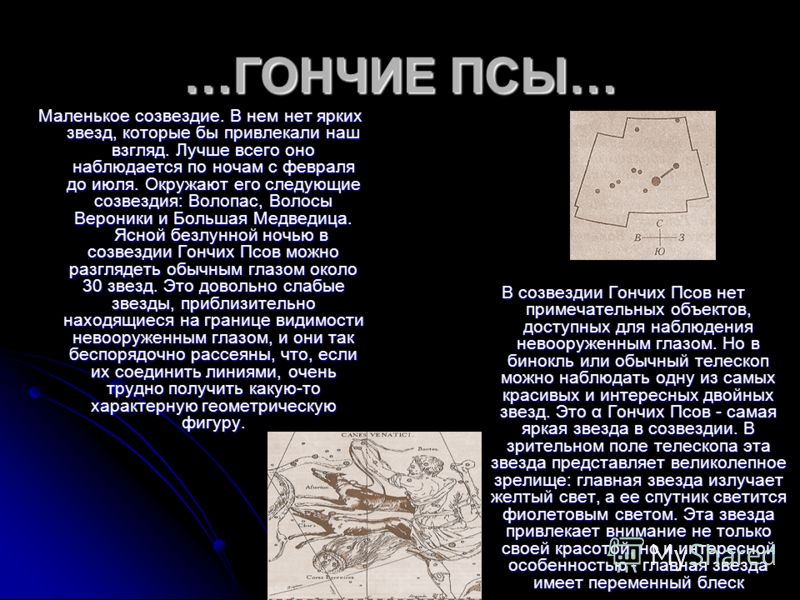
(((…))) The constellations Ursa Major, Ursa Minor, Bootes and the Hounds of the Dogs are associated with one myth, which still excites us with the tragedy described in it. Long ago, King Lycaon ruled Arcadia. And he had a daughter, Callisto, known throughout the world for her charm and beauty. Even the ruler of Heaven and Earth, the Thunderer Zeus, admired her divine beauty as soon as he saw her. Secretly from his jealous wife - the great goddess Hera - Zeus constantly visited Callisto in her father's palace. From him she gave birth to a son Arkad, who quickly grew up. Slender and handsome, he skillfully shot from a bow and often went hunting in the forest. Hera learned about the love of Zeus and Callisto. Falling into a rage, she turned Callisto into an ugly bear. When Arkad returned from hunting in the evening, he saw a bear in the house. Not knowing that this was his own mother, he pulled the bow string ... But Zeus did not allow Arkad, although unwittingly, to commit such a grave crime. Even before Arkad fired an arrow, Zeus grabbed the bear by the tail and quickly soared with her into the sky, where he left her in the form of the constellation Ursa Major. But while Zeus was carrying the bear, her tail began to lengthen, which is why the Big Dipper has such a long and curved tail in the sky. Knowing how much Callisto was attached to her maid, Zeus took her to heaven and left her there in the form of a small but beautiful constellation Ursa Minor. Zeus and Arkada transferred to the sky and turned into the constellation Bootes. Bootes is forever doomed to take care of his mother - the Big Dipper. Therefore, he firmly holds the leashes of the Hounds of the Dogs, who bristled with rage and are ready to pounce on the Big Dipper and tear it apart.

... TRIANGLE ... Refers to the smallest constellations. Above the horizon, this constellation is at its highest from October to March, and at this time it is best seen. Near it are the constellations Perseus, Aries, Pisces and Andromeda. On a clear and moonless night, about 15 stars can be seen with the naked eye in the constellation Triangulum, but only three of them are brighter than the fourth magnitude. They are located so that they form a right triangle - a characteristic geometric figure of the constellation. At the apex of the right angle is the star β Trianguli of the third magnitude. No myths or legends are associated with this constellation. Its name is motivated by the figure that the three brightest stars create. In this triangle, the ancient Greeks saw the delta of the Nile River transferred to heaven by the gods.
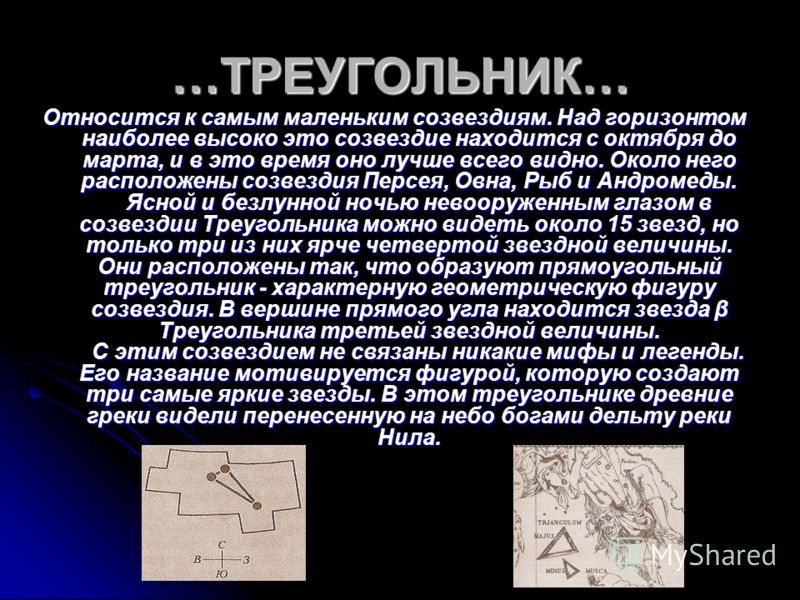
... THE WOLF ... Is the southern constellation, and only part of it can be observed from the territory of Bulgaria, low above the southern side of the horizon at night in July and August. Around the Wolf are the constellations of Scorpio, Angle, Centaurus and Libra. On a clear and moonless night in the constellation of the Wolf, about 70 stars can be seen with the naked eye, but only ten of them are brighter than the fourth magnitude. Two of them are visible from the territory of Bulgaria. The brighter stars in the constellation of the Wolf form a large curved quadrangle. It takes a lot of imagination to see in this geometric figure the wolf, in the form of which this constellation is depicted on ancient star maps. It is the southern constellation, and only part of it can be observed from the territory of Bulgaria, low above the southern side of the horizon at night in July and August. Around the Wolf are the constellations of Scorpio, Angle, Centaurus and Libra. On a clear and moonless night in the constellation of the Wolf, about 70 stars can be seen with the naked eye, but only ten of them are brighter than the fourth magnitude. Two of them are visible from the territory of Bulgaria. The brighter stars in the constellation of the Wolf form a large curved quadrangle. It takes a lot of imagination to see in this geometric figure the wolf, in the form of which this constellation is depicted on ancient star maps.
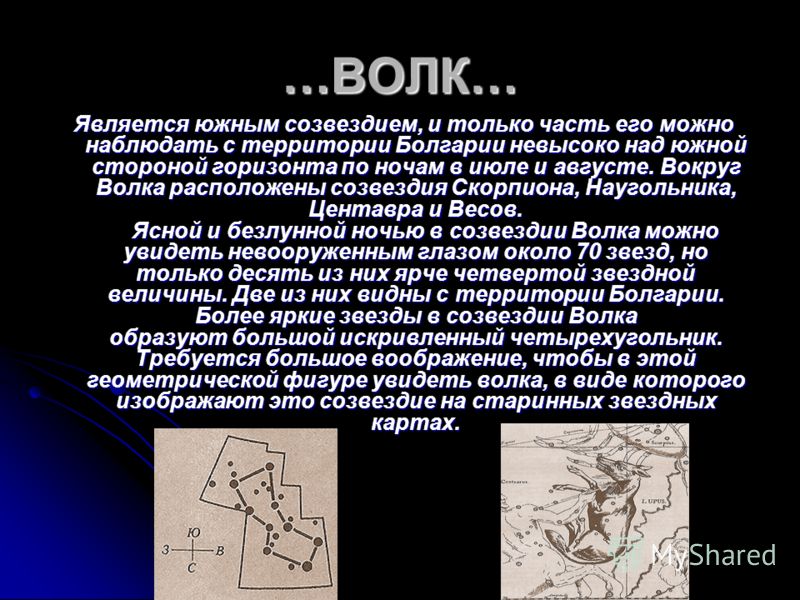
…DOLPHIN… Small constellation. It is best seen at night from July to November. The dolphin is surrounded by the constellations Pegasus, the Little Horse, the Eagle, the Arrow and the Chanterelle. On a clear and moonless night, about 30 stars can be seen in this constellation with the naked eye, but these are very faint stars. Only three of them are brighter than the fourth magnitude. Together with another faint star, they form a well-defined rhombus. The Bulgarian people traditionally call this figure the Small Cross. It is noteworthy that the ancient Greeks saw a dolphin in this rhombus, and on ancient star maps this constellation is depicted as a dolphin. Little constellation. It is best seen at night from July to November. The dolphin is surrounded by the constellations Pegasus, the Little Horse, the Eagle, the Arrow and the Chanterelle. On a clear and moonless night, about 30 stars can be seen in this constellation with the naked eye, but these are very faint stars. Only three of them are brighter than the fourth magnitude. Together with another faint star, they form a well-defined rhombus. The Bulgarian people traditionally call this figure the Small Cross. It is noteworthy that the ancient Greeks saw a dolphin in this rhombus, and on ancient star maps this constellation is depicted as a dolphin.
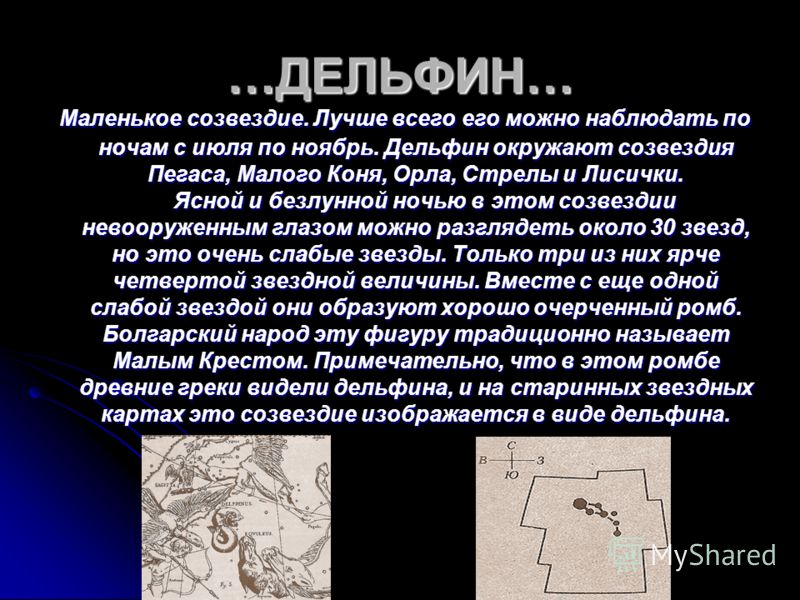
…PISCES… A large but faint zodiac constellation best seen from early October to late January. It is surrounded by the constellations of Aries, Whale, Aquarius, Pegasus and Andromeda. On a clear and moonless night in the constellation Pisces, about 75 faint stars can be distinguished with the naked eye. Only three of them are brighter than the fourth magnitude. If the brightest stars are connected by lines, they form a characteristic geometric figure of the constellation Pisces: an acute angle with a vertex at the point where the star α Pisces is located. One side of the angle is directed north and ends in a small triangle created by three faint stars. The other side faces west and ends in an elongated pentagon of five relatively bright stars. Just to the west of the western apex of the pentagon is the star β Pisces, the second brightest star in the constellation. You need to have a vivid imagination in order to see two fish in such a geometric figure, distant from each other and connected by a wide ribbon. This is how they are depicted on old star maps and in star atlases.
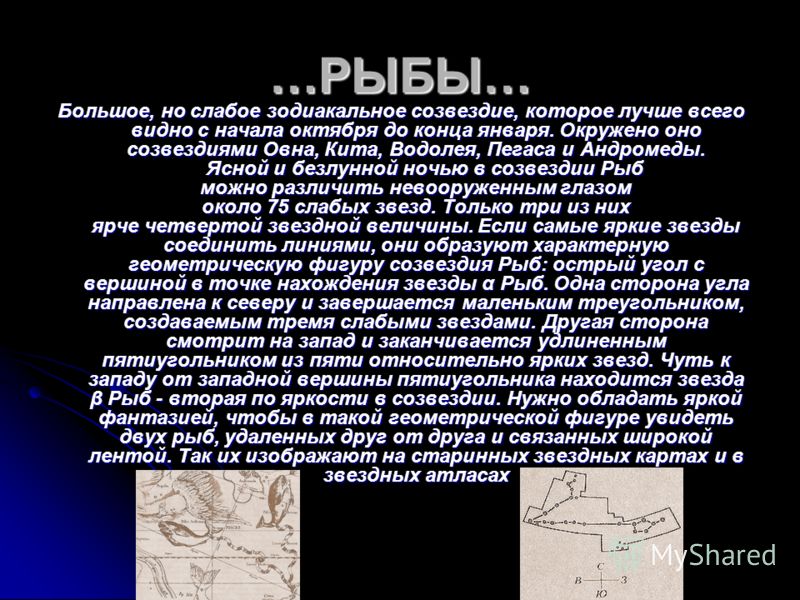
King Priam had a brother, Titon, who enchanted with his beauty the winged goddess of the dawn, Eos, who kidnapped Titon and took him to her place on the edge of the Earth and Heaven. The gods gave him immortality, but did not give him eternal youth. Days and years passed and left ruthless marks on his face. Once Titon noticed in the distance the goddess of love Aphrodite, walking with her son Eros, who was ready at any moment to shoot a love arrow from a stretched bow into the heart of a god or a mortal. Dressed in gold-woven clothes, with a wreath of fragrant flowers on her head, Aphrodite walked, holding her son's hand. And where the beautiful goddess stepped, wonderful flowers grew and the air was fragrant with freshness and youth. Fascinated by her beauty, Titon rushed after Aphrodite, who, together with her son, began to run away. A little more, and Teton should have overtaken them. To escape his persecution, Aphrodite and Eros rushed into the Euphrates River and turned into fish. The gods placed in the sky among the constellations of two fish, connected by a wide and long ribbon, personifying great maternal love. King Priam had a brother, Titon, who charmed with his beauty the winged goddess of the dawn, Eos, who kidnapped Titon and took him to her place on the edge of the Earth and Heaven. The gods gave him immortality, but did not give him eternal youth. Days and years passed and left ruthless marks on his face. Once Titon noticed in the distance the goddess of love Aphrodite, walking with her son Eros, who was ready at any moment to shoot a love arrow from a stretched bow into the heart of a god or a mortal. Dressed in gold-woven clothes, with a wreath of fragrant flowers on her head, Aphrodite walked, holding her son's hand. And where the beautiful goddess stepped, wonderful flowers grew and the air was fragrant with freshness and youth. Fascinated by her beauty, Titon rushed after Aphrodite, who, together with her son, began to run away. A little more, and Teton should have overtaken them. To escape his persecution, Aphrodite and Eros rushed into the Euphrates River and turned into fish. The gods placed in the sky among the constellations of two fish, connected by a wide and long ribbon, personifying great maternal love.
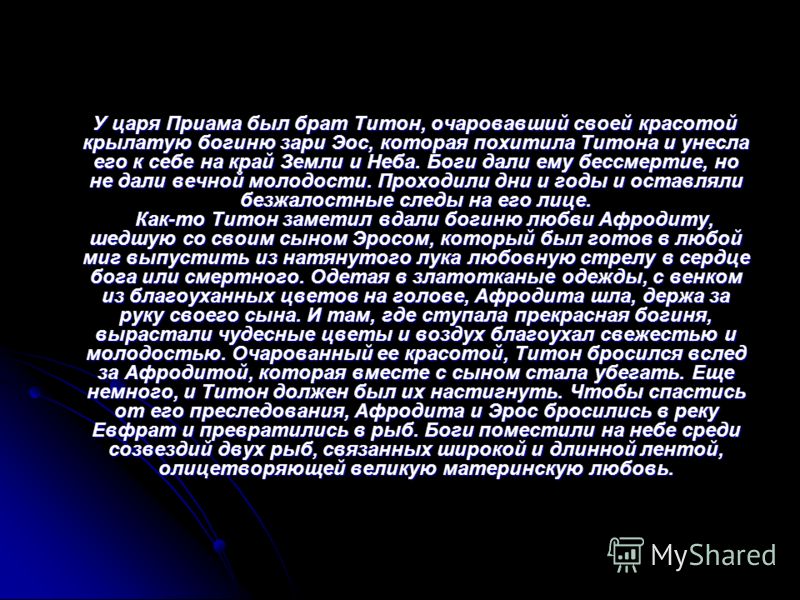
... The Milky Way ... On clear and especially moonless nights in July, August and September, probably everyone had to see a milky-white stripe in the sky, which, as it were, encircles the sky. Like a river, this strip spreads across the sky. In some places it "flows" calmly in a narrow channel, but suddenly it "spills" and expands. Bright "clouds" are replaced by paler ones, as if huge waves are raging in a heavenly river. At some point, this celestial river splits into two branches, which then again join into a wide milky-white river, flowing its waters across the celestial sphere. This is the MILKY WAY. On clear and especially on moonless nights in July, August and September, probably, everyone had to see a milky-white stripe in the sky, which, as it were, encircles the sky. Like a river, this strip spreads across the sky. In some places it "flows" calmly in a narrow channel, but suddenly it "spills" and expands. Bright "clouds" are replaced by paler ones, as if huge waves are raging in a heavenly river. At some point, this celestial river splits into two branches, which then again join into a wide milky-white river, flowing its waters across the celestial sphere. This is the MILKY WAY.

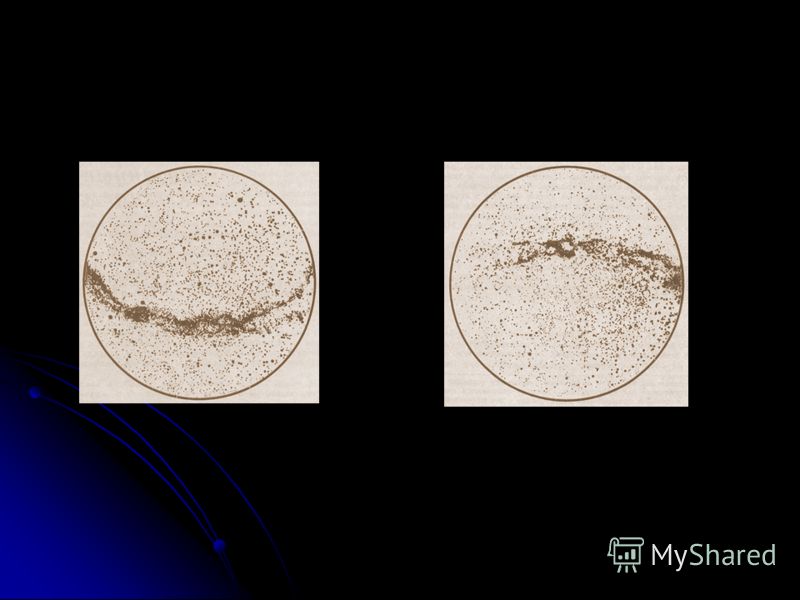
The Milky Way has attracted the attention of people since ancient times. In the mythology of the ancient Greeks, the following is told about him. On the birthday of Hercules, Zeus, delighted that the most beautiful of mortal women, Alcmene, gave birth to his son, predetermined his fate - to become the most famous hero of Greece. In order for his son Hercules to receive divine power and become invincible, Zeus ordered the messenger of the gods Hermes to bring Hercules to Olympus so that the great goddess Hera would feed him. Hermes flew with the speed of thought in his winged sandals. Unnoticed by anyone, he took the newly born Hercules and brought him to Olympus. The goddess Hera at this time slept under a magnolia strewn with flowers. Quietly approached the goddess Hermes and put little Hercules to her chest, who greedily began to suck her divine milk, but suddenly the goddess woke up. In anger and rage, she threw the baby from her breast, whom she had hated long before his birth. Hera's milk spilled and flowed across the sky like a river. This is how the Milky Way (galaxy, galaxy) was formed. The Milky Way has attracted the attention of people since ancient times. In the mythology of the ancient Greeks, the following is told about him. On the birthday of Hercules, Zeus, delighted that the most beautiful of mortal women, Alcmene, gave birth to his son, predetermined his fate - to become the most famous hero of Greece. In order for his son Hercules to receive divine power and become invincible, Zeus ordered the messenger of the gods Hermes to bring Hercules to Olympus so that the great goddess Hera would feed him. Hermes flew with the speed of thought in his winged sandals. Unnoticed by anyone, he took the newly born Hercules and brought him to Olympus. The goddess Hera at this time slept under a magnolia strewn with flowers. Quietly approached the goddess Hermes and put little Hercules to her chest, who greedily began to suck her divine milk, but suddenly the goddess woke up. In anger and rage, she threw the baby from her breast, whom she had hated long before his birth. Hera's milk spilled and flowed across the sky like a river. This is how the Milky Way (galaxy, galaxy) was formed.

The Bulgarian people called the Milky Way Kumov Straw or simply Straw. Here is what the folk legend tells. Once in a fierce winter, when the whole earth was covered with deep drifts of snow, one poor man ran out of fodder for his oxen. Day and night he thought about what to feed the cattle, where to get at least a little straw so that the oxen would not die of hunger. And so, on a dark frosty night, he took a basket and went to his godfather, who had many stacks of straw. He carefully filled the basket with straw and quietly went back. In the darkness, he did not notice that his basket was full of holes. He walked like this and walked with a basket behind his back to his house, and straw after straw fell from a holey basket, forming a long trail behind him. And when he came home, he saw that not a straw was left in the basket! At dawn, the owner went out to the haystack to collect straw and feed his oxen, and saw that at night someone had stirred up his haystack and stole the straw. He followed the trail and reached the house where his godfather lived. He called his godfather and began to scold him for stealing straw from him. And the godfather began to make excuses and lie that he did not even get out of bed that night. Then the godfather took him by the hand, led him out into the street and showed him the straw scattered along the road. Then the thief was ashamed ... And the owner of the straw went to his home and said: "Let this stolen straw light up and never go out, so that everyone knows and remembers that you can’t steal from a godfather ..." The straw caught fire, and since then until Kumov Straw burns in the sky today. The Bulgarian people called the Milky Way Kumov Straw or simply Straw. Here is what the folk legend tells. Once in a fierce winter, when the whole earth was covered with deep drifts of snow, one poor man ran out of fodder for his oxen. Day and night he thought about what to feed the cattle, where to get at least a little straw so that the oxen would not die of hunger. And so, on a dark frosty night, he took a basket and went to his godfather, who had many stacks of straw. He carefully filled the basket with straw and quietly went back. In the darkness, he did not notice that his basket was full of holes. He walked like this and walked with a basket behind his back to his house, and straw after straw fell from a holey basket, forming a long trail behind him. And when he came home, he saw that not a straw was left in the basket! At dawn, the owner went out to the haystack to collect straw and feed his oxen, and saw that at night someone had stirred up his haystack and stole the straw. He followed the trail and reached the house where his godfather lived. He called his godfather and began to scold him for stealing straw from him. And the godfather began to make excuses and lie that he did not even get out of bed that night. Then the godfather took him by the hand, led him out into the street and showed him the straw scattered along the road. Then the thief was ashamed ... And the owner of the straw went to his home and said: "Let this stolen straw light up and never go out, so that everyone knows and remembers that you can’t steal from a godfather ..." The straw caught fire, and since then until Kumov Straw burns in the sky today.

... ANCIENT GREEK MYTH ... about the Sun After Uranus (Sky) became the master of the whole world, he married the blessed Gaia (Earth). And they had six sons and six daughters - mighty and terrible titans and titanides. Titan Hyperion and the eldest daughter of Uranus Theia had three children - Helios (Sun), Selena (Moon) and Eos (Dawn). Far away on the eastern edge of the Earth was the golden chamber of Helios, the god of the Sun. Every morning, when the east began to turn pink, pink-fingered Eos opened the golden gates, and Helios rode out of the gates on his golden chariot, which was drawn by four winged horses white as snow. Standing in the chariot, Helios firmly held the reins of his violent horses. He shone all over with a dazzling light emitted by his long golden robe and a radiant crown on his head. Its rays first illuminated the highest mountain peaks, and they began to glow, as if they were engulfed in violent tongues of fire. Higher and higher the chariot rose, and the rays of Helios poured onto the Earth, giving it light, warmth and life. After Helios reached the heavenly heights, he began to slowly descend on his chariot to the western edge of the Earth. There, on the sacred waters of the Ocean, a golden boat was waiting for him. The winged horses brought the chariot with the rider directly into the boat, and Helios rushed on it along the underground river to the east to his golden palaces. There Helios rested at night. With the onset of day, he again rode his golden chariot to the heavenly expanses to give light and joy to the Earth. After Uranus (Sky) became the master of the whole world, he married the blessed Gaia (Earth). And they had six sons and six daughters - mighty and terrible titans and titanides. Titan Hyperion and the eldest daughter of Uranus Theia had three children - Helios (Sun), Selena (Moon) and Eos (Dawn). Far away on the eastern edge of the Earth was the golden chamber of Helios, the god of the Sun. Every morning, when the east began to turn pink, pink-fingered Eos opened the golden gates, and Helios rode out of the gates on his golden chariot, which was drawn by four winged horses white as snow. Standing in the chariot, Helios firmly held the reins of his violent horses. He shone all over with a dazzling light emitted by his long golden robe and a radiant crown on his head. Its rays first illuminated the highest mountain peaks, and they began to glow, as if they were engulfed in violent tongues of fire. Higher and higher the chariot rose, and the rays of Helios poured onto the Earth, giving it light, warmth and life. After Helios reached the heavenly heights, he began to slowly descend on his chariot to the western edge of the Earth. There, on the sacred waters of the Ocean, a golden boat was waiting for him. The winged horses brought the chariot with the rider directly into the boat, and Helios rushed on it along the underground river to the east to his golden palaces. There Helios rested at night. With the onset of day, he again rode his golden chariot to the heavenly expanses to give light and joy to the Earth.



